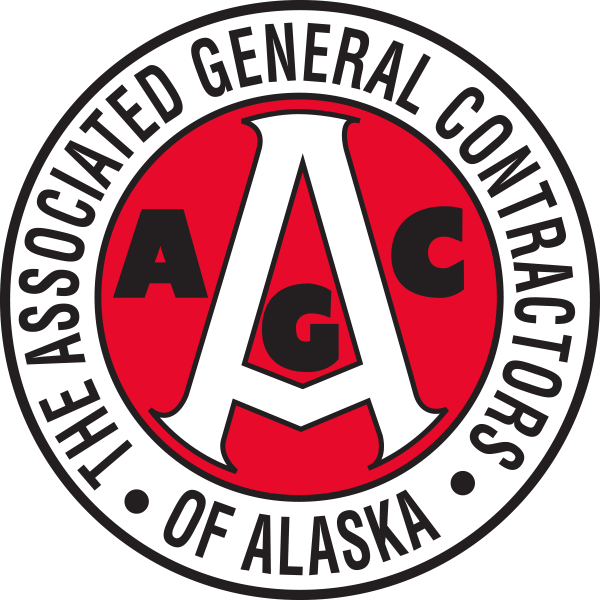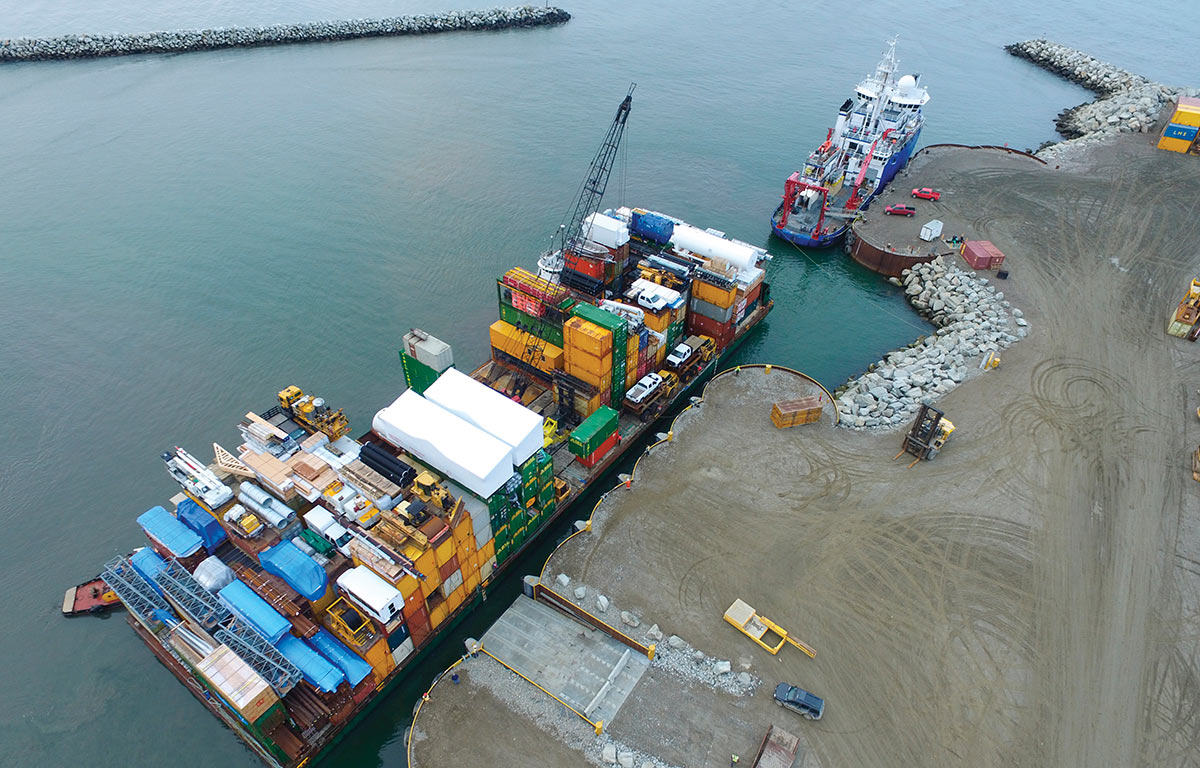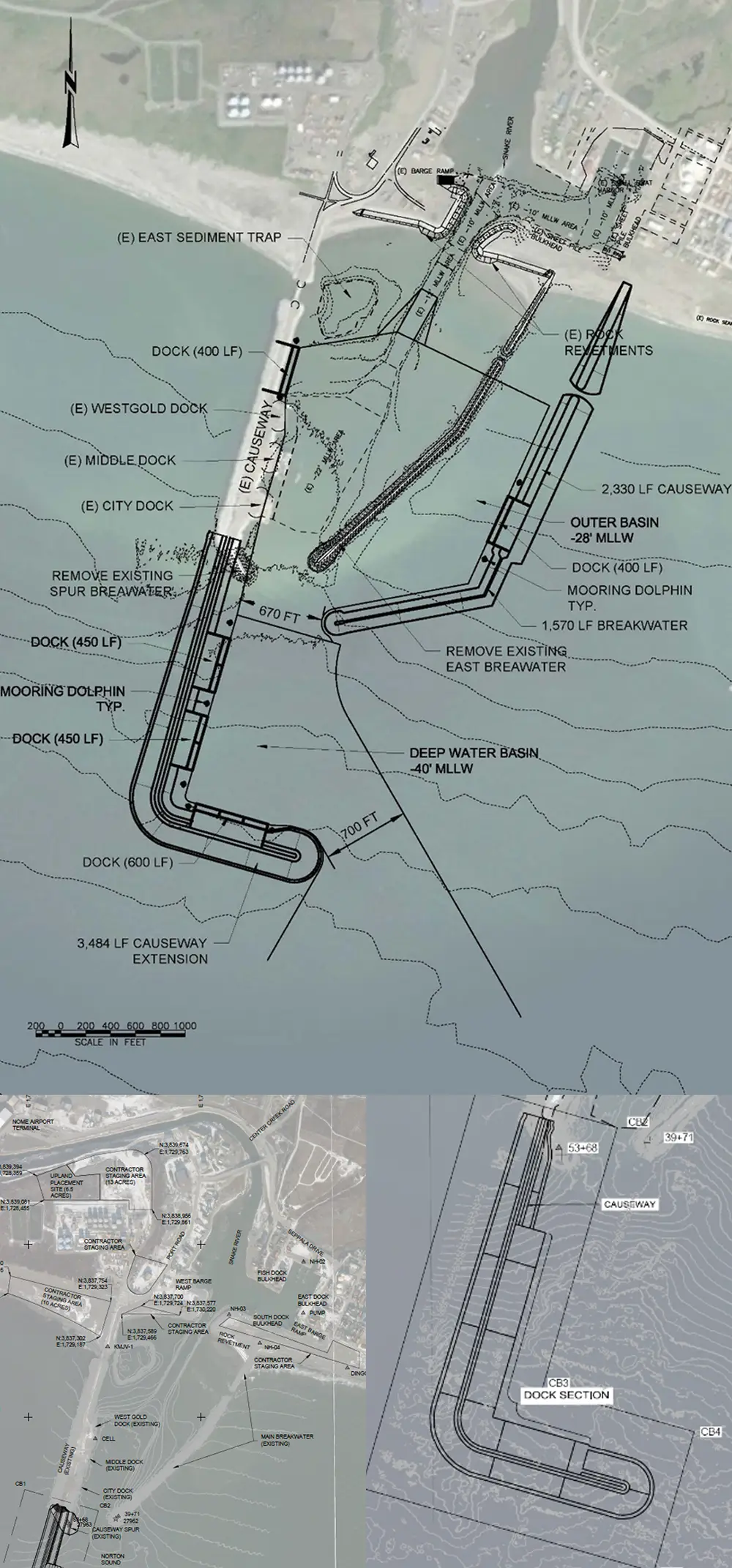
Update
fter more than a decade of planning, the long-awaited Arctic deep draft port at the Port of Nome is inching toward construction. This joint project between the United States Army Corps of Engineers, or USACE, and the City of Nome will improve the safety, reliability, and efficiency of waterborne transportation systems that utilize the port.
USACE Civil Works Branch Chief Bruce Sexauer expected the finalized design to be completed and submitted for review in May. Routine project challenges delayed the finalization of the design from its most recent target date of January.
“Our schedule got pushed back a few months due to a couple of snafus with design features and the permitting process, which is business as usual,” says City of Nome Port Director Joy Baker. “We’re moving past that and we’re wrapping up getting that permit.”
Despite the delay, the Phase 1 bid package is expected to go public in the fall and remains on target for construction to begin in 2024.
“We’re getting this project ready for awarding a construction contract in 2024, and we’re definitely on track for that,” Sexauer says. “There are a lot of details being worked on right now. This is a long-term project with a lot—a lot—of moving pieces.”

Photo provided by US Army Corps of Engineers, Alaska District.
But with a depth of minus 22 feet in the Nome port’s outer basin, the existing facilities can’t safely accommodate vessels with drafts greater than 18 feet. Instead, lightering vessels transport passengers, crew and supplies between ship and shore, and fuel transfers are made ship to ship, which pose both safety and environmental risks.
The port modification will alleviate those risks and better accommodate deep-draft vessels entering the harbor. The project will extend the existing western causeway approximately 3,500 feet, build a 3,900-foot eastern causeway/breakwater combo with a depth of minus 28 feet, enlarge the entrance to the outer basin, create a new deep-water basin with a depth of minus 40 feet, and add 2,000 feet of sheet-pile dock face.
The project will also bring jobs and hundreds of millions of dollars into the state. The USACE’s feasibility study estimates that construction will create 2,938 statewide jobs and bring in $498 million in combined income and secondary spending; it’s estimated that 818 of those jobs and $177.6 million will directly benefit the region.

The City of Nome is responsible for designing the utilities, docks, and roadways. Baker says the city has contracted with PND Engineers to design the docks and roadways and CRW Engineering Group for the utilities design. Both companies are Associated General Contractors, or AGC, of Alaska members.
“CRW is under contract to the Nome Joint Utility System to design utility infrastructure for the proposed port expansion project, including water, sewer, fuel, and power/telecommunication systems,” says Karl Hulse, principal with CRW Engineering Group. “The utility improvements will support anticipated port operations associated with the expansion project.”
Bruce Sexauer, United States Army Corps of Engineers
“We’ve already started collecting information necessary for Phase 2, which is mostly dredging,” he says. “We were able to get some data this early spring, but then the ice went bad before we could complete it, so we’ll continue on with the design for Phase 2.”
Phase 3, which will remove the remaining portion of the east breakwater, reconstruct the eastern causeway, and add the two 400-foot sheet pile docks, will take another three to four years after the first two phases are complete. Sexauer says it’s impossible to commit to a timeline for the remaining phases or an overall end date for the entire project.
“It’s kind of hard to speculate right now exactly the timeline,” he says. “This is a multi-phased, multi-year project, and we’re developing the future phases as we go along. To say something specific, it just wouldn’t be right; we don’t know with enough certainty.”

“I was dancing in the street out in front of my house when they passed that,” Baker says. “It’s a wonderful thing.”
The City of Nome is responsible for 100 percent of the design and funding of the local service facilities, which include the utilities, docks, roads, bridges and dolphins. Baker says that two $1.6 million state-funded grants covered the city’s share of the GNF costs and paid for 95 percent design of the local service facilities, while another $175 million in state funds will cover the remaining design and construction of Phase 1. She says the city is actively exploring different avenues to secure funding for its share of phases 2 and 3, including federal grants and investment agreements with private industries.
USACE received $250 million in federal funding for the project in 2022, and Sexauer says it will continue to seek funding to support phases 2 and 3 as it moves toward the start of construction.